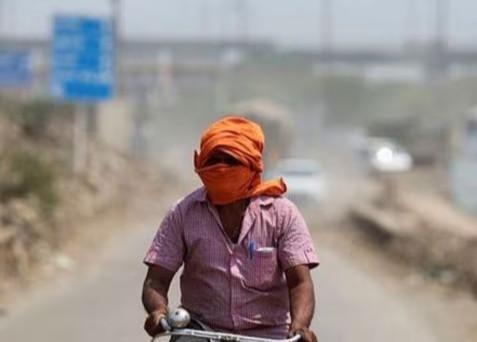
Extreme Heat Endangering Health & Productivity of Workers: Report
As the global temperature continues to rise, a recent report by the World Health Organisation (WHO) and World Meteorological Organisation (WMO) has highlighted the alarming impact of extreme heat on the health and productivity of workers worldwide.
According to the report, worker productivity drops by 2-3% for every degree above 20°C, making it a significant concern for industries and economies globally. The report emphasizes that manual workers in agriculture, construction sectors, and vulnerable populations like children and the elderly in developing countries are particularly at risk.
The report’s findings are based on a comprehensive analysis of studies conducted across the globe, including Europe, Asia, Africa, and the Americas. The research highlights the devastating consequences of extreme heat on workers’ health, including heatstroke, dehydration, and kidney dysfunction.
Heatstroke, a life-threatening condition, occurs when the body’s temperature rises to 40.5°C (105°F) or higher. Dehydration, a common affliction, can lead to symptoms such as headaches, fatigue, and dizziness. Kidney dysfunction, a potentially irreversible condition, can result in kidney failure and even death.
The report emphasizes that extreme heat is not just a problem for industrialized nations. Developing countries, where workers often lack access to basic amenities like air conditioning, medical care, and protective gear, are disproportionately affected.
In many developing countries, children and the elderly are particularly vulnerable to the effects of extreme heat. Children, whose bodies are still developing, are more susceptible to heat-related illnesses due to their immature thermoregulation system. The elderly, with their decreased ability to regulate body temperature, are also at a higher risk.
The construction and agriculture sectors are also identified as high-risk areas. Construction workers, who often toil in hot and humid conditions, are at risk of heatstroke, dehydration, and heat exhaustion. Agricultural workers, who spend long hours outdoors, are also vulnerable to the effects of extreme heat.
The report’s findings have significant implications for industries and economies worldwide. With worker productivity dropping by 2-3% for every degree above 20°C, the economic costs of heat-related illnesses are substantial. Moreover, the report highlights the need for employers to take proactive measures to ensure worker safety and health.
Some of the recommended measures include:
- Providing regular breaks and access to shade or air-conditioned spaces
- Encouraging workers to stay hydrated by providing access to clean drinking water
- Implementing heat stress prevention programs, including training on heat-related illnesses and first aid
- Ensuring workers wear appropriate protective gear, such as hats, sunglasses, and protective clothing
The report also emphasizes the need for governments and international organizations to take immediate action to address the issue of extreme heat. This includes developing and implementing heat wave early warning systems, providing emergency response plans, and increasing public awareness about the risks of heat-related illnesses.
In conclusion, the report by WHO and WMO highlights the extreme heat as a significant threat to the health and productivity of workers worldwide. The findings emphasize the need for proactive measures to ensure worker safety and health, particularly in high-risk sectors like construction and agriculture. As the global temperature continues to rise, it is essential that industries, governments, and international organizations work together to mitigate the effects of extreme heat and protect the well-being of workers.
News Source: https://repository.inshorts.com/articles/en/PTI/45d9bd2d-ff57-417c-9e5f-831344bb34b0






